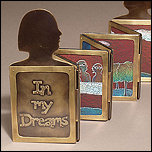
In my dreams We travel in Boats ©2008
I’m using rivets handmade from brass wire. Luckily I have a bunch left from another project.
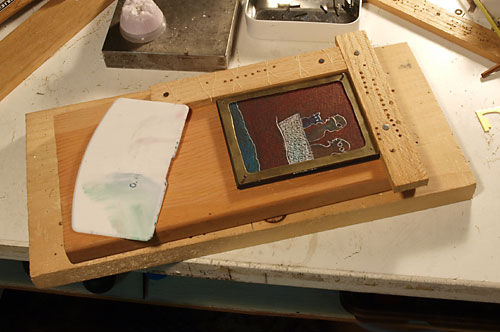
9. Use a jig to hold the page parts while drilling holes in the four corners.
I'm careful to keep the lower edges as straight as possible so the book will stand okay. There is a strip of brass between the two hinged pages that is my spacer.
You can see the long copper tubing that is holding the three hinge pieces together. At this stage it's easy to pull that out to dis-assemble the book. Later it will be trimmed and flared to lock it in place.

10. Start assembling the "guts" of the book.
One of the tubing pieces has not been trimmed to size yet.
This is an exciting point for me. I know the pages will stand okay when assembled, now I just have to do all the rivets.
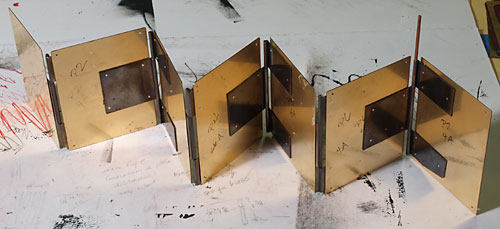
11. The "guts" are finished. I had to photograph this - it's not attractive, but it works!
You can see the parts for the cover in the foreground. The shiny brass page with the tubing section riveted on will be hidden. The white piece of museum board next to it has a spacer cut out to accomodate the hinge. This way each inner page will be flat and will provide a better surface for the drawing to rest on.
Every part has a number and a letter to indicate it's position in the book.
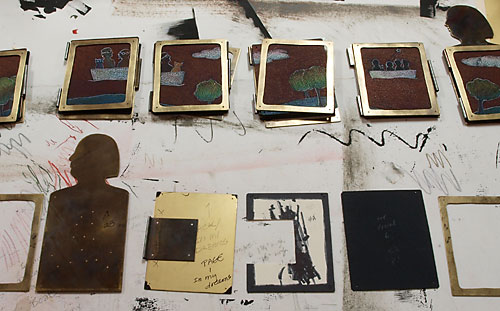
12. Ready to rivet all the parts together.
PAGE: 1 | 2 | 3
Blog entry about this book.
Web page for this book.
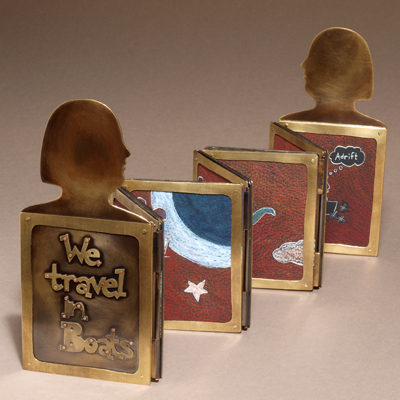
13. The book is assembled. This is the back view.